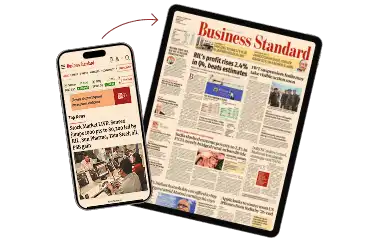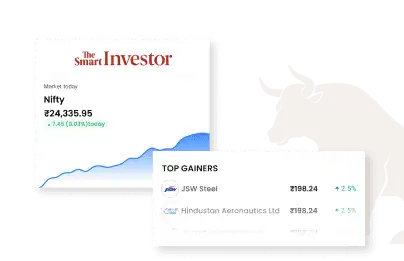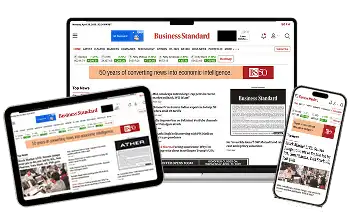From aspirational to exhausted: Rethinking India's middle class story
A fragmented, fatigued population can't fuel economic growth the old way
)
Explore Business Standard
A fragmented, fatigued population can't fuel economic growth the old way
)
Around 2007, the late economist Subir Gokarn wrote a landmark article in this paper titled, Middle Class Origins. Almost 20 years later, the postulates of that article are even more relevant — that the origins of the middle class, or the process by which they came to be middle class, mattered and must be factored into our understanding of the middle class and our assumptions of their behaviour and attitudes. That it would be incorrect to assume that India’s future middle class will have the same characteristics as the (then) present middle class in terms of homogeneity and behaviour patterns in spending and saving (and, to extend his argument, world views on nation, politics, and societal duties).
The “contemporary” middle class, at the time, was the product of public sector employment — government jobs, both at higher and lower echelons, offering permanent employment, health care and pensions, low-interest loans (regular increments too, one may add) that gave security and predictability that shaped the behaviour and attitudes of the middle class. Since 1990, this as a source of employment has been decreasing, as data shows, and similar kinds of formal large private sector employment are not compensating. The most hit, Gokarn observed, are the lower echelon employees in public sector enterprises, where numbers are actual. Also Read: Subir Gokarn: Why Indian middle-class origins matter for growth forecasts
The future middle class, he postulated, will not be homogeneous, since there is no longer a single strong “feeder” into or creator of it, but many sources or channels through which it emerges. While the numbers of what we call the middle class today are swelling, the majority do not have the same historical attributes of stability and predictability of income, security of jobs, or basic hygiene factors of life taken care of. Hence, growth in numbers based on an income-level-defined middle class will not automatically deliver sustained economic performance, since the factors connecting the two are different.
As this column has often pointed out, we need to do a reality check on our count of the “middle class” based on income alone, and include the dimensions of income stability and predictability that come from having skills, a line of work and an occupation type that offer resilience in volatile times, and at least 30 per cent surplus income after expenses to take care of today and investment in one’s own future security and in the next generation’s social mobility. If we wish to hold on to the number and stay with the “purchasing power at the moment” definition of the middle class, then we need to think of the segments that make up this non homogeneous admixture to understand how it will behave – be it as consumers, electors, taxpayers or citizens.
There is one segment that still has the vestiges of the old middle class – current government employees and those employed in formal jobs in large private sector companies. Based on occupation data, this already small segment has a declining share of the growing future middle class. The majority will be in quasi-formal or quasi-informal small private company employment, small entrepreneurs with limited business scalability and ability to withstand environmental cycles, and self-employed gig workers with varying levels of skills and low levels of stability.
Our study Drivers of Destiny among the young lower middle-income India, many of them first-generation college-goers, provides some pointers to the nature of the future middle class (previous columns here and elsewhere have described the findings of the study in detail).
They are exhausted from generating the energy needed to find meaningful work and navigate their way up the socio- economic ladder in the absence of facilitating structures. They are in search of white-collar respectability, stability, security, predictability, social mobility, recognition (which the old middle class had). Their holy grail, ironically, is a “government job”. Their deepest desire is a less exhausting life (lower aspiration levels, dreams that are “bonsai”), with little struggle and uncertainty. Is India’s famed aspirational middle class giving way to version next, the exhausted middle class? The stability and homogeneity we assume in the growing numbers of the middle class actually is a mass of heterogeneity and has inbuilt income and occupation volatility. Literature suggests that lower social heterogeneity (more homogeneity) defines the activism of the middle class, as they act as a homogeneous group to exert power. The future middle class will not only be less homogeneous but more parochial, deprived of the pan-Indian living experiences of public sector transferable jobs of its predecessor.
Perhaps we should change our conceptual frame of a single middle class to a two tiered one – an economic development-driving “genuine” middle class that has the attributes discussed earlier; and a consuming capable class with purchasing power at the moment. The linkage between the growth of the middle class and the contribution to powering economic and social development will be different for different groups, as will their spending and saving choices, and the policy levers and electoral value propositions too. Perhaps this is what Gokarn meant when he said to ensure the virtuous circle, we need to recognise and respond to the changing nature of the class itself.
Already subscribed? Log in
Subscribe to read the full story →

3 Months
₹300/Month
1 Year
₹225/Month
Renews automatically, cancel anytime

Over 30 premium stories daily, handpicked by our editors



News, Games, Cooking, Audio, Wirecutter & The Athletic

Digital replica of our daily newspaper — with options to read, save, and share



Insights on markets, finance, politics, tech, and more delivered to your inbox

In-depth market analysis & insights with access to The Smart Investor



Repository of articles and publications dating back to 1997

Uninterrupted reading experience with no advertisements



Access Business Standard across devices — mobile, tablet, or PC, via web or app
First Published: Jul 30 2025 | 7:30 PM IST